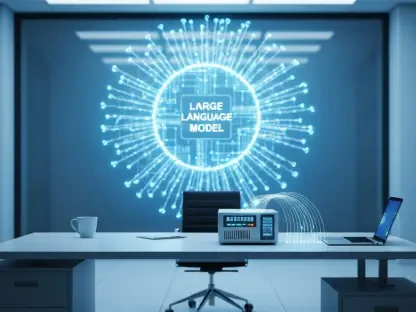As the world of technology continues to advance at a rapid pace, the field of full-stack JavaScript development is no exception. Developers now face the challenge of managing complex and dynamic demands, navigating an ever-expanding toolbox to optimize web applications while also adhering to best practices. Recent discussions and surveys have highlighted the importance of achieving a delicate balance between adopting new technologies and avoiding complications arising from excessive choices and integrations. By 2025, it is expected that certain tools and frameworks will dominate the landscape, reshaping the ecosystem.
Evolving Tools and Frameworks
In the upcoming years, frameworks like Angular, Bun, and Vitest are anticipated to play significant roles in the JavaScript ecosystem. Angular continues to prove itself as a powerful tool for building robust, maintainable web applications, positioned to remain prominent with developers. Bun, a relatively new addition, aims to simplify the entire Node.js build process by offering faster runtimes and a streamlined developer experience. Meanwhile, Vitest 3.0 has been making waves, not just as part of the Vite build tool, but also emerging as a standalone tester, gaining popularity for its rapid test execution capabilities.
Another crucial element defining the future of JavaScript development is the State of JavaScript survey, which annually provides insight into the rise and fall of various technologies. This survey captures the evolving preferences and inclinations of the developer community, predicting the frameworks expected to lead in the coming years. This continuous feedback loop ensures that emerging tools like Bun and Vitest quickly gain traction when their advantages are evident. Consequently, the ecosystem evolves with developers’ dynamic needs, promoting frameworks and tools that demonstrate tangible benefits.
Trends in Full-Stack Development
Looking towards 2025, Ryan Carniato, the creator of SolidJS, has presented compelling predictions regarding the trajectory of JavaScript frameworks. Carniato envisions a marked shift towards server-side development, thought to offer enhanced performance and security. However, he also notes a simultaneous trend back towards client-side emphasis, underlining a cyclical nature in industry dynamics. This oscillation highlights full-stack thinking’s persistence, as developers leverage both client and server-side advances to create more comprehensive and performant applications.
Another intriguing development is the emergence of the “AX” or Agent Experience concept, introduced by Netlify cofounder Matt Biilmann. This new perspective considers the experiences of AI agents within software design, analogous to the principles of UX (User Experience) and DX (Developer Experience). Biilmann argues that as AI becomes more integral to interactive applications, understanding and optimizing AI agents’ experiences will become as crucial as considering human users. This forward-thinking approach raises questions about the experiential capabilities of AI and how developers might need to adapt their methodologies to offer optimal “AX.”
Future Considerations and Innovations
As technology advances rapidly, the realm of full-stack JavaScript development is also evolving. Developers today face the challenge of handling complex and dynamic demands while navigating a growing array of tools to optimize web applications, all while following best practices. Debates and surveys have underscored the need to strike a balance between embracing new technologies and steering clear of issues that arise from an overabundance of choices and integrations. This delicate balancing act is crucial for developers attempting to maintain both innovative and stable applications.
By 2025, it is predicted that specific tools and frameworks will dominate the full-stack JavaScript landscape, significantly reshaping the ecosystem. Understanding which technologies to adopt and which to bypass will become even more critical for developers striving for efficiency and efficacy. This prediction implies a move towards a more streamlined and standardized set of tools that can reduce the current complexity many developers face. Thus, staying informed and adaptable will be key to navigating this ever-changing field successfully.









